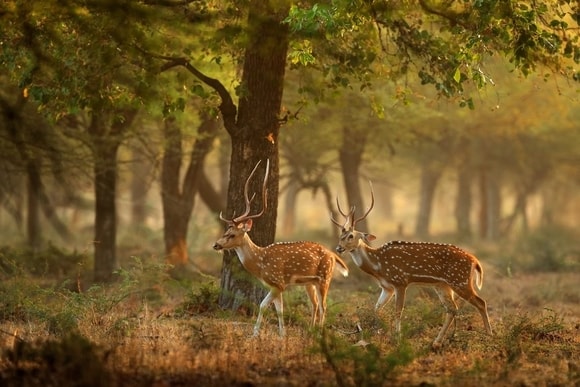Back to: BIOLOGY SS2
Welcome to Class !!
We are eager to have you join us !!
In today’s Biology class, We will be learning about Balance in Nature. We hope you enjoy the class!
CONTENT
- Dynamic Equilibrium in Nature
- Factors Affecting Population
- Abiotic Factors Affecting Population
- Biotic factors affecting Population
- Family planning and birth control

DYNAMIC EQUILIBRIUM IN NATURE
When population-influenced factors (abiotic and biotic) are favourable, growth is promoted but when they are unfavourable growth is retarded. A factor which limits the population growth is called a LIMITING FACTOR. The sum of all the limiting factors is known as ENVIRONMENTAL RESISTANCE
The net effect of the abiotic and biotic factors is at a point, the population size of living organisms tends towards a dynamic equilibrium known as BALANCE IN NATURE. When the population increases, the environmental resistance increases too. For instance, food decreases in a population and this results in a competition which later leads to the death of the weaker organisms, thereby keeping the population relatively constant
FACTORS AFFECTING POPULATION OF ORGANISMS
The population is the total number of organisms of the same species living together in a given area at a particular time. In an ecosystem, the community is made up of many populations of different species of organisms. When various population or biotic community of an established ecosystem is generally stable, such a community is said to be balanced.
The various factors controlling the population of organisms in a particular habitat are generally referred to as ENVIRONMENTAL RESISTANCE. These factors can be grouped into two;
- Abiotic factors
- Biotic factors
ABIOTIC FACTORS AFFECTING A POPULATION OF ORGANISMS
These include heat, water, space, light and nutrients.
- HEAT: Organisms do run away from a hot environment because heat can cause stress or death.
- WATER: The availability of water determines the survival rate of organisms in any population. Therefore water availability increases the population while a lack of it causes a decrease in population.
- SPACE: This is important for normal growth and development. Lack of space results in overcrowding and competition among the organisms.
- LIGHT: This is of utmost importance in the plant community. Without light, producers may not be able to manufacture food needed by all organisms in the habitat. Low light intensity also results in weak plants which adversely reduce the quantity of food.
- NUTRIENTS: To manufacture their food, plants require nutrients in the soil. Lack of these nutrients leads to deficiency symptoms noticed in plants e.g. stunted growth. This eventually results in a poor yield of crops.
EVALUATION
- What is a limiting factor?
- How is balance reached in nature?
BIOTIC FACTORS AFFECTING A POPULATION OF ORGANISMS
These are activities of organisms affecting other organisms and they include food, competition, natality, mortality, dispersal, parasite, predators and pathogen.
- FOOD: This is the basic material required for survival of the organisms, for their growth and development and reproduction.
- COMPETITION: This arises among organisms due to lack of space, food and other resources in the environment. Competition aggravates into fighting and cannibalism among animals.
- NATALITY: This is the rate of birth. High birth rate increases population and results in overcrowding.
- MORTALITY: This is the rate of death. A Low death rate increases population, but a high death rate reduces it. With a low death rate, there will be food shortage and overcrowding.
- DISPERSAL: Among plants, seeds and fruits dispersal through water, wind, animals and insects reduces the chances of overcrowding. This, in turn, prevents overpopulation.
- PARASITE: These are organisms that feed on or in another organism (the host). Their action can cause damage or death of the host, thus reducing the population.
- PREDATORS: These are organisms which feed on weaker ones (the prey). If predation is high, it reduces the population of the prey.
- PATHOGEN: These are disease-causing organisms e.g. bacteria, viruses, fungi, protozoa. Their actions affect the health of other organisms. The population of the host organisms is thus reduced when the pathogenic attack is high.
EVALUATION
- List the abiotic factors affecting the population of organisms.
- What is the difference between limiting factors and environmental resistance?
We have come to the end of this class. We do hope you enjoyed the class?
Should you have any further question, feel free to ask in the comment section below and trust us to respond as soon as possible.
In our next class, we will be learning about Family Planning. We are very much eager to meet you there.
